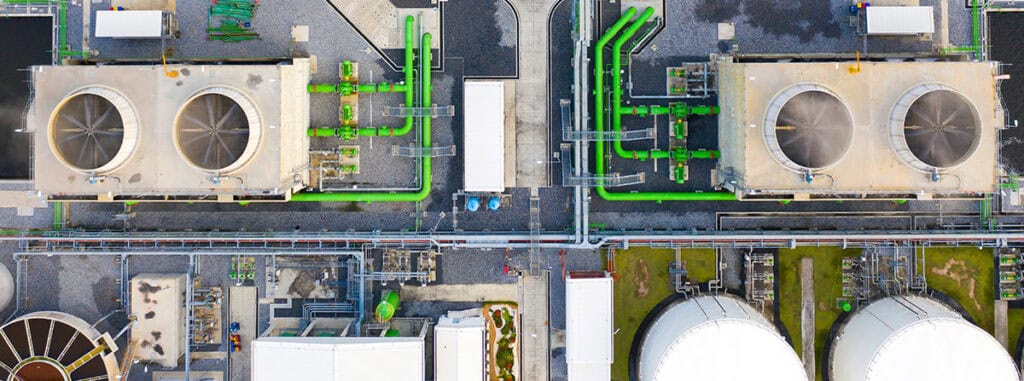One of the most significant sources of energy loss in industrial processes is waste heat – the thermal energy that escapes without being put to productive use. However, there’s a powerful tool at our disposal that can help us recapture this valuable resource: the shell and tube heat exchanger.
Below, we’ll explore five ways that shell and tube heat exchangers can assist in recovering waste heat, ultimately improving your overall process efficiency and bottom line.
1. Reclaiming Heat from Exhaust Streams
One of the primary applications of shell and tube heat exchangers is the recovery of heat from exhaust streams. Whether it’s the flue gas from a boiler, the hot air from a drying process, or the discharge from a compressor, these heat exchangers can be strategically placed to capture the thermal energy that would otherwise be lost to the environment.
By using a shell and tube design, the heat exchanger can effectively transfer this waste heat to a secondary fluid, such as water or a process stream, which can then be used to preheat incoming process materials or generate steam for other applications. This not only reduces the overall energy consumption of the facility but also helps to minimize the environmental impact of the operation.
2. Improving Process Heating Efficiency
In many industrial processes, heat is required to maintain specific temperature setpoints or to raise the temperature of raw materials or intermediates. Conventional heating methods, such as electric heaters or steam boilers, can be energy-intensive and often result in significant heat losses.
Learn how Enerquip’s direct fired heaters reuse heat through an integrated economizer.
Shell and tube heat exchangers can be used to improve the efficiency of these process heating applications. By using the waste heat from one stream to preheat another, the overall energy required for the heating process can be significantly reduced. This can be particularly beneficial in applications where the process stream needs to be heated to a high temperature, as the shell and tube design allows for efficient heat transfer over a wide temperature range.
3. Enabling Cogeneration and Combined Heat and Power (CHP) Systems
Cogeneration and combined heat and power (CHP) systems are powerful tools for improving overall energy efficiency. These systems generate both electricity and useful thermal energy, often by capturing the waste heat from power generation equipment, such as turbines or engines.
Shell and tube heat exchangers play a crucial role in CHP systems by allowing the efficient transfer of this waste heat to a secondary fluid, such as water or steam. This thermal energy can then be used for a variety of applications, such as space heating, process heating, or the generation of additional electricity through a steam turbine.
By implementing a CHP system with shell and tube heat exchangers, facilities can achieve remarkable improvements in energy efficiency, often reaching overall system efficiencies of 80% or higher.
4. Facilitating Heat Integration in Complex Processes
In many industrial processes, there are multiple streams of hot and cold fluids that could potentially be integrated to improve overall efficiency. However, the complexities of these systems can make it challenging to identify and implement effective heat recovery strategies.
Shell and tube heat exchangers are well-suited for these types of complex heat integration projects. Their modular design and flexible configurations allow them to be easily integrated into existing processes, enabling the recovery of waste heat from a wide range of sources and the efficient transfer of this energy to other process streams.
By carefully analyzing the heat and mass balances of the entire process and strategically placing shell and tube heat exchangers, engineers can unlock significant energy savings and improve the overall sustainability of the operation.
5. Enhancing the Reliability and Longevity of Heat Recovery Systems
Effective heat recovery systems are not only about maximizing energy efficiency – they also need to be reliable, durable, and easy to maintain. Shell and tube heat exchangers excel in this regard, thanks to their robust construction and proven track record of long-term performance.
The shell and tube design, with its separate fluid paths and sturdy tube bundle, is inherently less susceptible to fouling and corrosion than other heat exchanger types. This translates into fewer maintenance requirements, longer service life, and a lower risk of unexpected downtime or system failures.
Additionally, shell and tube heat exchangers can be easily inspected, cleaned, and repaired, allowing facility operators to proactively maintain the performance and reliability of their heat recovery systems. This, in turn, helps to ensure a consistent and reliable supply of recovered thermal energy to support the overall process efficiency.
Shell & Tube Heat Exchangers from Enerquip
Most operations are looking to optimize energy efficiency and minimize waste. The shell and tube heat exchanger is a powerful tool that can help achieve these goals, enabling the recovery of waste heat and the implementation of more sustainable and cost-effective operations. By leveraging the benefits of shell and tube, you can unlock significant energy savings and reduce environmental impact.
As we continue to navigate the challenges of today’s energy landscape, the shell and tube heat exchanger will undoubtedly play an increasingly important role in our quest for greater efficiency and sustainability. By embracing this technology and incorporating it into our operations, we can build a brighter, more sustainable future for our industries and our planet.
Ready to make waste heat work for you? We invite you to contact us or request a quote today.
More from the Enerquip Blog
- Waste Heat Economizer FAQs
- 7 Ways Shell & Tube Heat Exchangers Outperform Plate & Frame
- Industrial Waste Heat Recovery Systems: How They Can Benefit Your Facility
- Condensing Economizers Can Help Operations Reclaim Latent Heat
- Scheduled Maintenance Shutdown Tips
- Maintaining Your Shell and Tube Heat Exchanger

